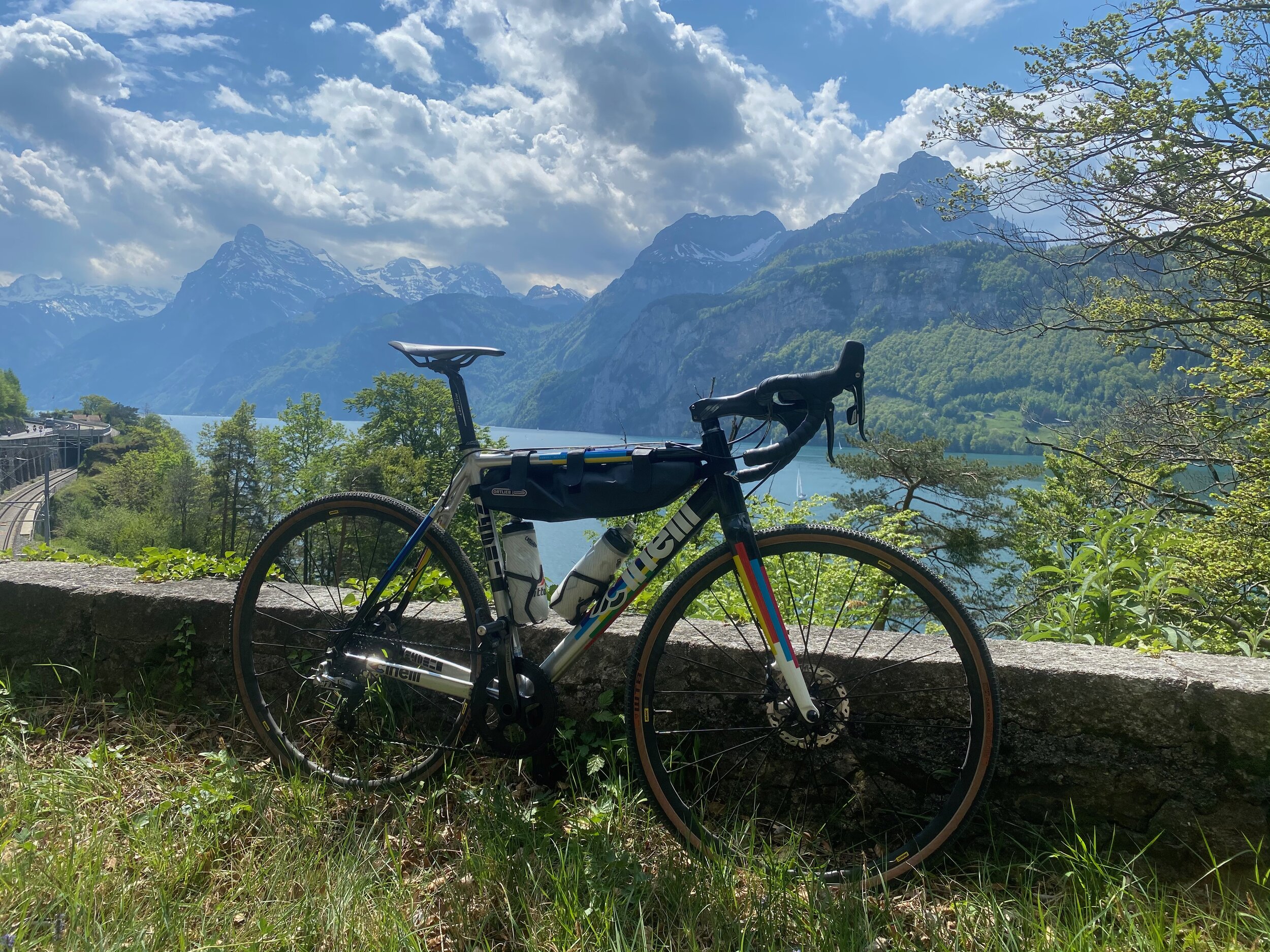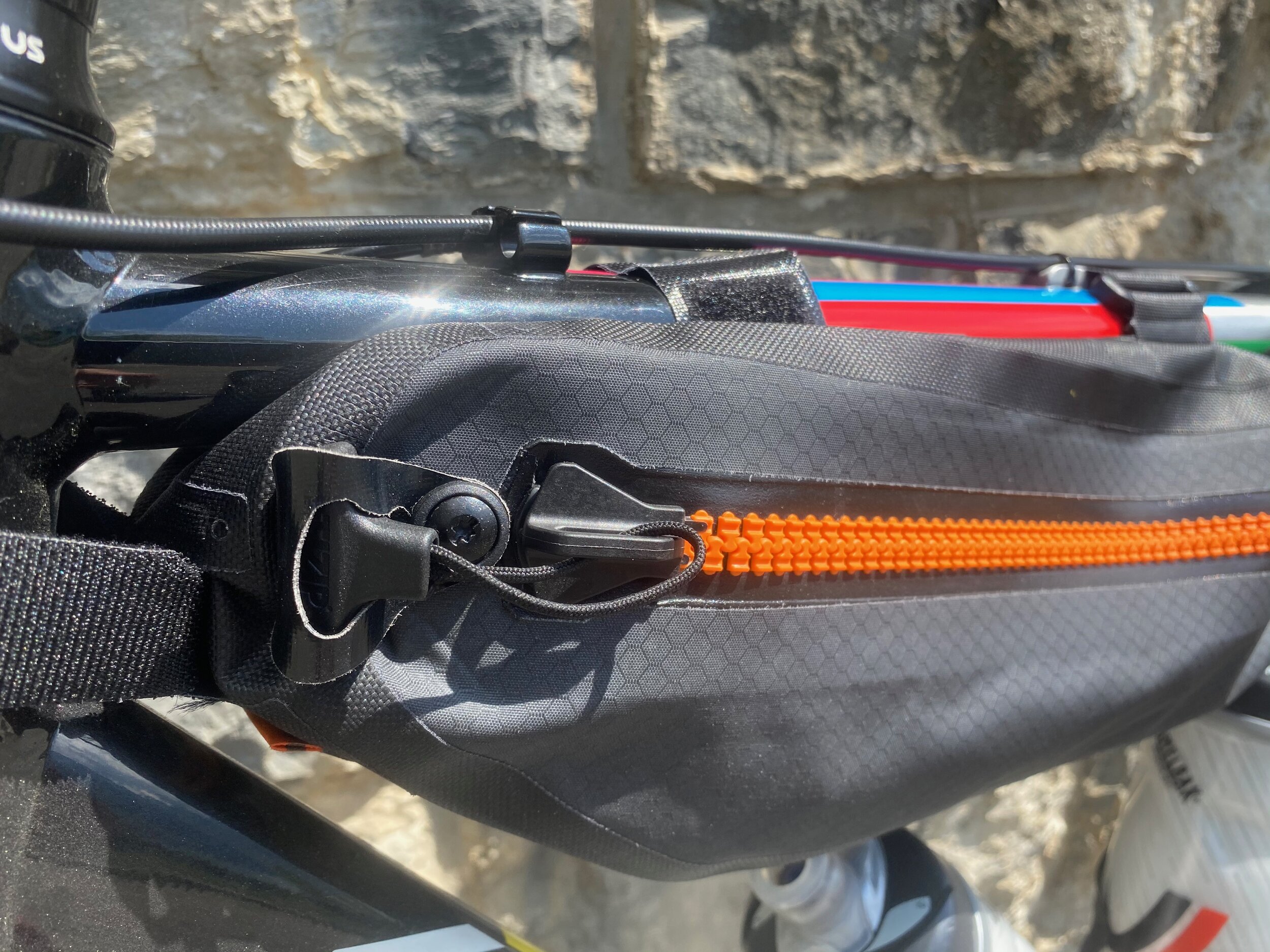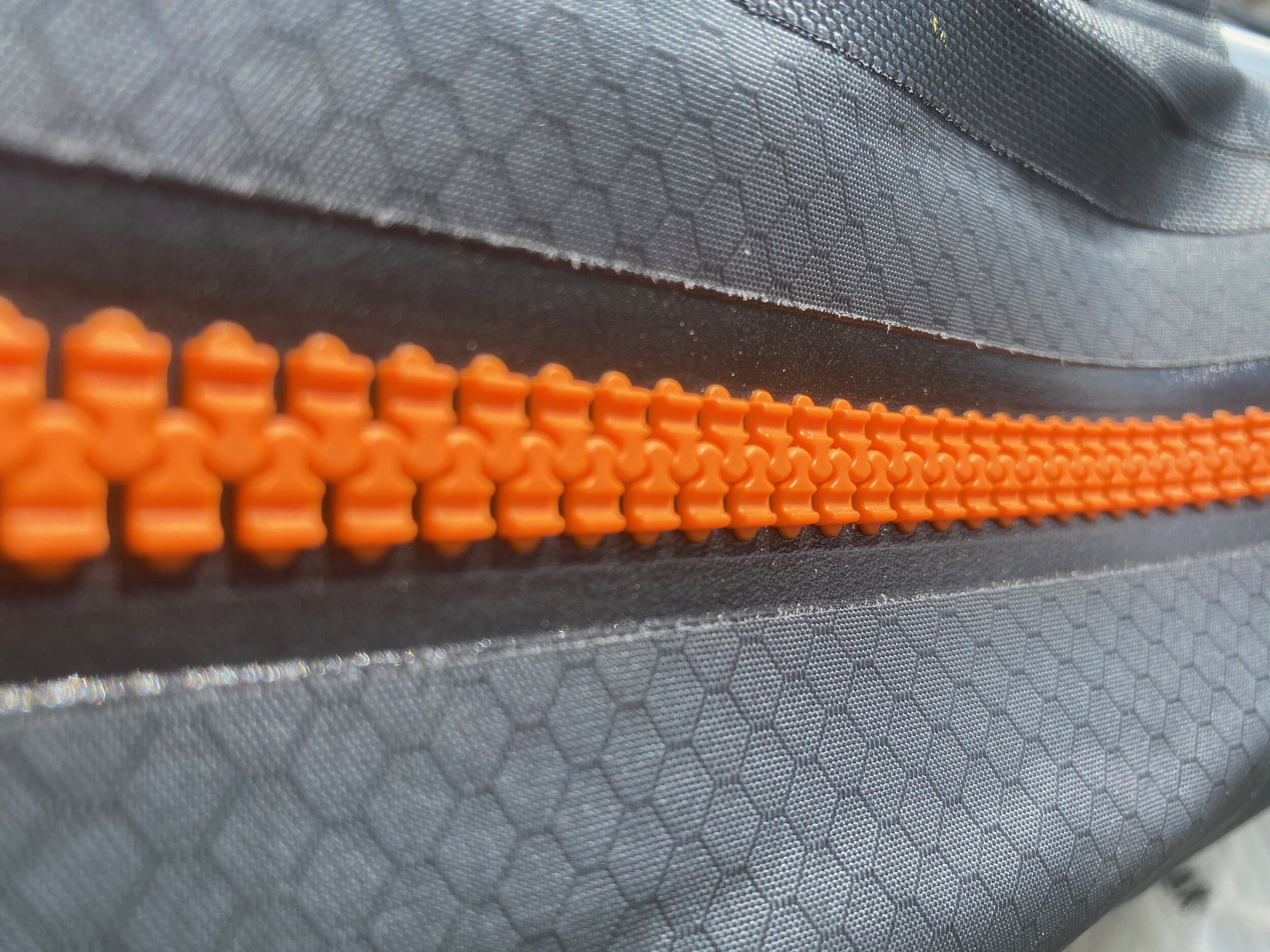Review: Ortlieb’s is the top tube bag to which most others aspire
Bikepackers have long known what roadies are slowly figuring out: stashing gear inside a bike bag makes more sense than riding with bulging jersey pockets.
I’m one of three to meet up for a weekend ride in the mountains outside Zurich. Instead of road kit, I wear a shirt. Instead of stuffing jersey pockets (which I didn’t have) with food, tubes and essentials, I opt for a top tube bag. Conventional? No. Commonplace? Soon.
Kit caddies from Ortlieb, Roswheel, Apidura, Restrap and others are making this atypical approach to road rides increasingly common and in turn, making road rides a lot more practical. Shirt flapping in wind, I bathe in the freedom of unorthodoxy. I see no turning back, only more people realizing that this is in fact a better way to ride.
Quickly becoming essential. Specs: 170 grams; rubberized nylon and completely waterproof; heavy duty, waxed, easy to access zipper; stow-away zipper locker; easy-to-attach velcro straps.
Construction Ortlieb’s top tube bag is made from rubberized nylon (imagine a high-end dry bag and you’re there). The reinforced velcro attachments and straps are expedition-grade and customizable. The zipper comes partially waxed to help with opening, closing and waterproofing. The pulley is finger-molded and has a stow-pocket to avoid bouncing around. Inside is one large 4L pocket (versus component pockets); four liters is a lot of space to fit a jacket, food, tubes, tent poles - whatever. When in place there’s minimal moving around on the top tube, if any (and no visible scuffing on the frame). The frame fits directly underneath the top tube from end to end with room for two bidons, which are easily accessed when in use.
Set up The Ortlieb comes with 6 velcro compression straps (three fixed, one of the front and rear, and another spare). In five minutes, it’s attached securely to a bike’s top tube and is easy to modify for internal and external cable routing, fixed firm in place with the head tube and down tube straps. On two 55cm frames, the bag tucks neatly away on the tube and is (nearly) undetectable when in use (there’s the odd leg graze when pedalling which is to be expected depending on your set-up).
On the road Out on the road, the Ortlieb is a conversation piece. The orange outlined zipper and distinctive shape elicit comments from skeptics and purists, all of whom eventually realize how practical a top tube bag is several hours into a ride. Carrying capacity alone makes a strong argument for on and off road rides: four liters carries tubes, cartridges, levers, food, wallet, phone, gilet, arm warmers and a jacket, if needed. Try fitting that into bulging jersey pockets.
In-ride, I’d say the strength of the zipper is the bag’s only shortcoming — it’s made for off-bike access and needs a good yank (two hands) to get open if you want your mobile for pictures. (Keep you phone in your bib pocket and problem solved.) This is a very minor trade off, of course. Ease of access or weather-ready for anything. On long rides or multi-day epics, the latter wins IMHO.
All the weight you’d typically haul in jersey pockets relocated to a lower centre of gravity whilst you ride. Jersey bulk is gone, the ride is made more comfortable by having nothing to carry. While pockets are “supposed” to be stuffed with essentials, they need not be (seat rolls were step one in this direction; this is the evolution). Of the hundreds of kms we did for this article, all felt more adventurous courtesy of this bag (cheers, Ortlieb). Its ruggedness, quality of construction and practicality bestow a feeling of freedom to the rider when in use, which hasn’t grown tired; on the road, this thing flies in the face of traditionalism.
It might not look “pro,” but as times goes by, that seems less important, overshadowed by the comfort and practicality of using it in any circumstance. Definitely an outstanding bit of kit.
Closing note: handlebar bags are great on long rides, too, but if you can bare the odd knee-graze, top tube bags are better: hands sit unimpeded on the tops and TTBs carry just as much.




